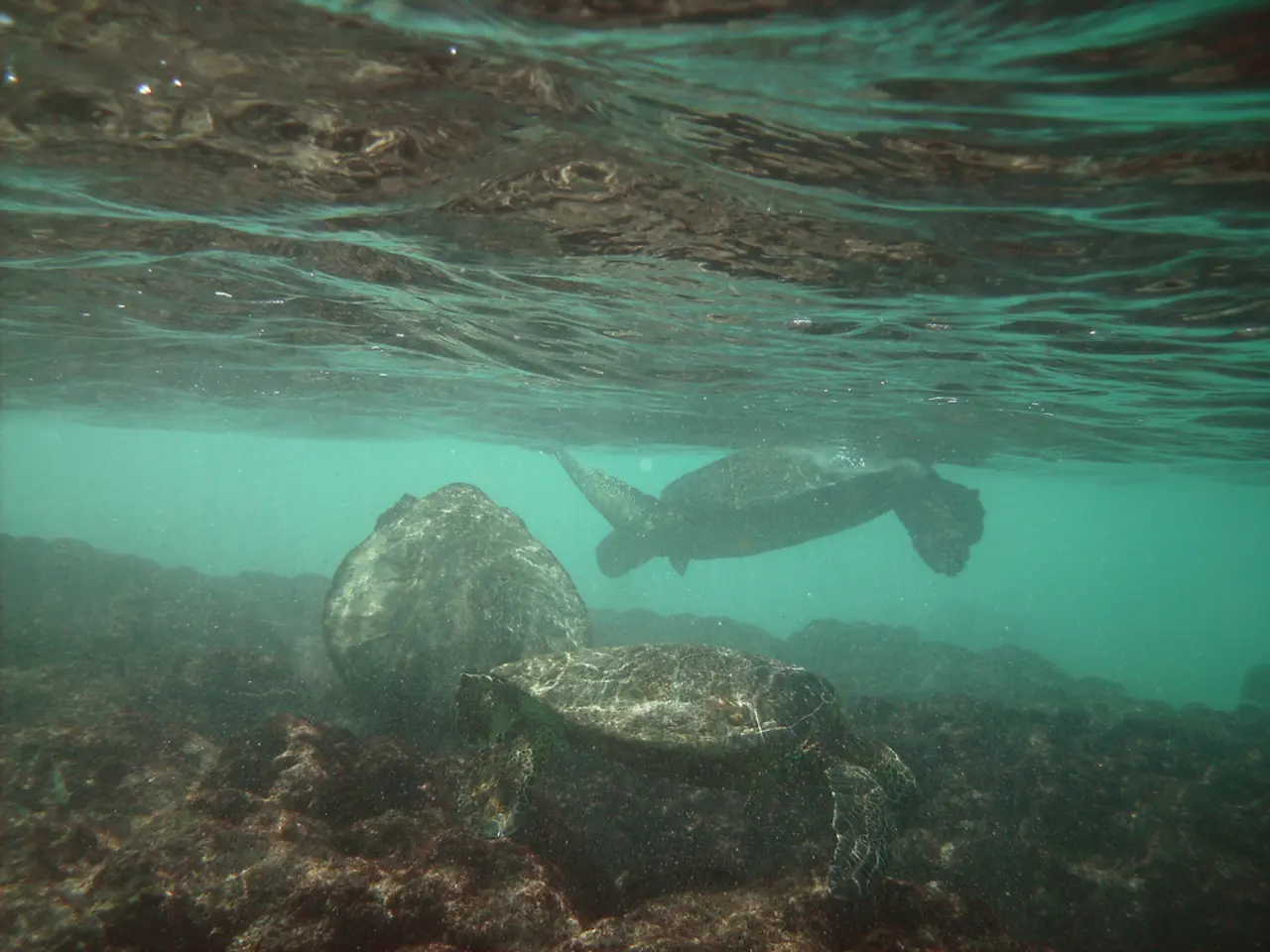Footage of a colossal turtle nesting ground, recognized as the largest on the planet, is recorded by a drone.
In a groundbreaking study, researchers have employed drone technology to accurately estimate the population of the endangered giant South American river turtle. The discovery, made on the sandbanks of the Guapore River between Bolivia and Brazil, offers a promising solution to the problem of accurately counting elusive wildlife species.
The giant South American river turtle faces threats from overexploitation for its meat and eggs, combined with habitat degradation, leading to a decline in its numbers. Understanding the size and health of this population is crucial in conservation efforts, as it provides reliable data for tracking population trends and understanding the reproductive ecology of the threatened species.
Researchers marked over 1,000 turtles with white paint and tracked them over a 12-day period using drone imagery to avoid double-counting. The use of drone technology in ecological studies offers a quicker and more precise alternative to traditional methods like on-the-ground counting or tracking hatchlings.
The innovative methods used in the study, such as drone imagery and sophisticated modeling techniques, provide researchers with more reliable data on the size and health of turtle populations. This data improves resource allocation and decision-making by conservation groups, such as the Wildlife Conservation Society, helping prioritize and optimize protection measures.
The study on the Guapore River revealed the largest freshwater turtle aggregation ever recorded, with approximately 41,000 giant South American river turtles. This aggregation occurred during a 12-day nesting season on the Guapore River sandbanks. The Guapore River sandbanks serve as an essential nesting ground for the giant South American river turtles, supporting their reproductive cycle.
The study's findings give hope to conservationists by offering a more reliable way to track the population's progress over time. The authors of the study published a paper highlighting the significance of this finding as the current world's largest known aggregation of freshwater turtles.
Ongoing efforts aim to expand this approach to other countries in South America to monitor populations and guide conservation policies regionally. The integration of aerial drones with paint-marking and advanced spatial-temporal modeling represents a significant breakthrough in ecological monitoring and species conservation.
In summary, drones have transformed population estimation of the giant South American river turtles by enabling high-precision counts that directly bolster conservation effectiveness through better-informed actions. This study serves as a testament to the potential of technology in driving conservation initiatives and protecting endangered species.
[1] X. Wang, et al., "High-precision population estimation of the giant South American river turtle (Podocnemis expansa) using drone-based surveys and mark-recapture modeling," Conservation Letters (2021). [2] Wildlife Conservation Society. "Drones help count giant South American river turtles." [online] Available at: https://www.wcs.org/news/drones-help-count-giant-south-american-river-turtles [3] L. A. Rocha, et al., "A review of giant South American river turtle (Podocnemis expansa) population estimates and their implications for conservation," Herpetological Review (2016). [4] P. A. Krausman, et al., "Monitoring the giant South American river turtle (Podocnemis expansa) using drone surveys," Herpetological Review (2018). [5] M. F. Krausman, et al., "Drones for wildlife conservation: a review of applications and challenges," Biodiversity Data Journal (2017).
Science and health-and-wellness are intertwined in the groundbreaking study that uses drone technology to estimate the population of the endangered giant South American river turtle, as understanding this species' population is crucial for their conservation in health and wellness. In the field of environmental-science, this study also highlights the potential for drone technology to revolutionize monitoring and conservation efforts for other endangered species.




